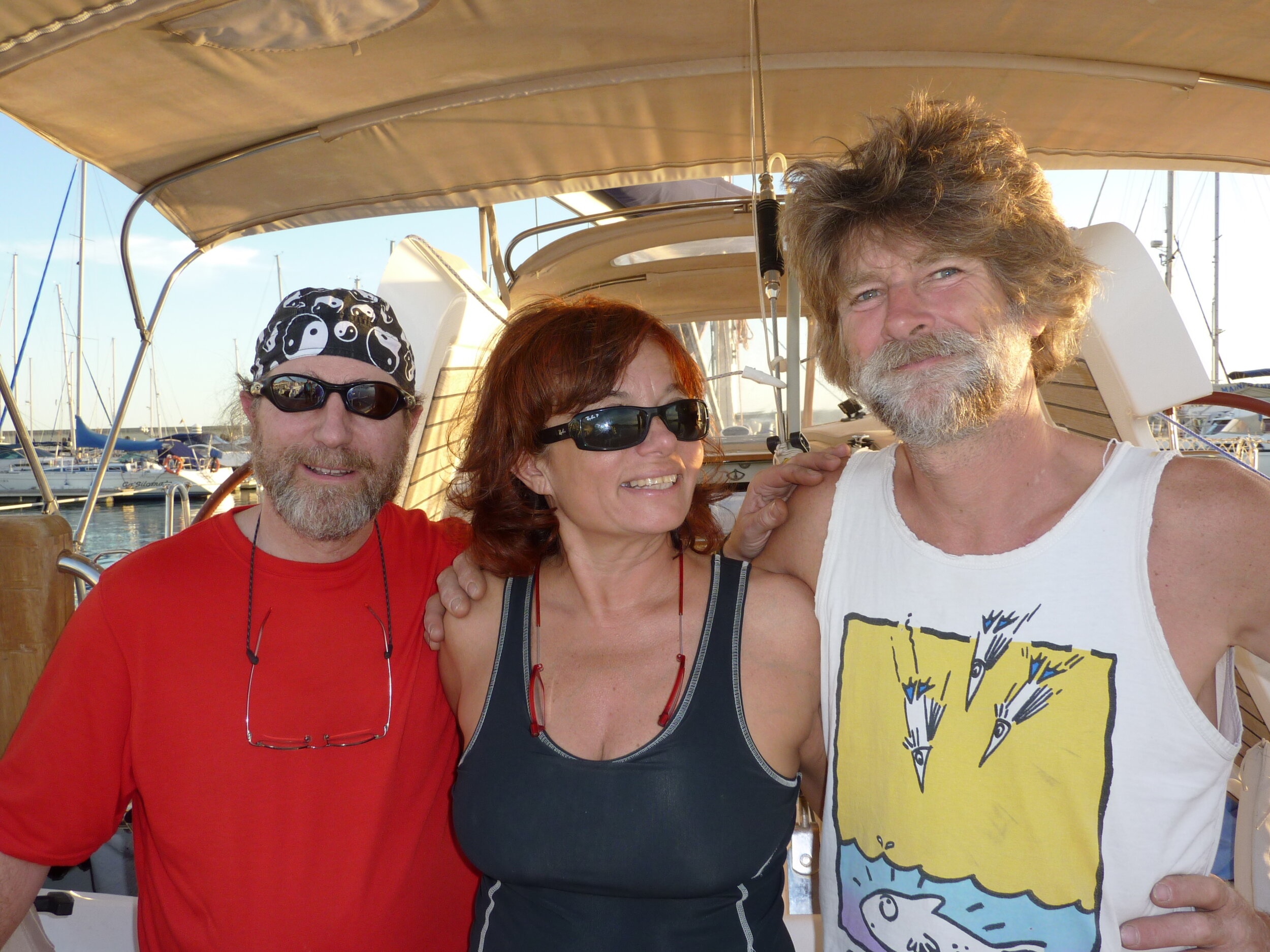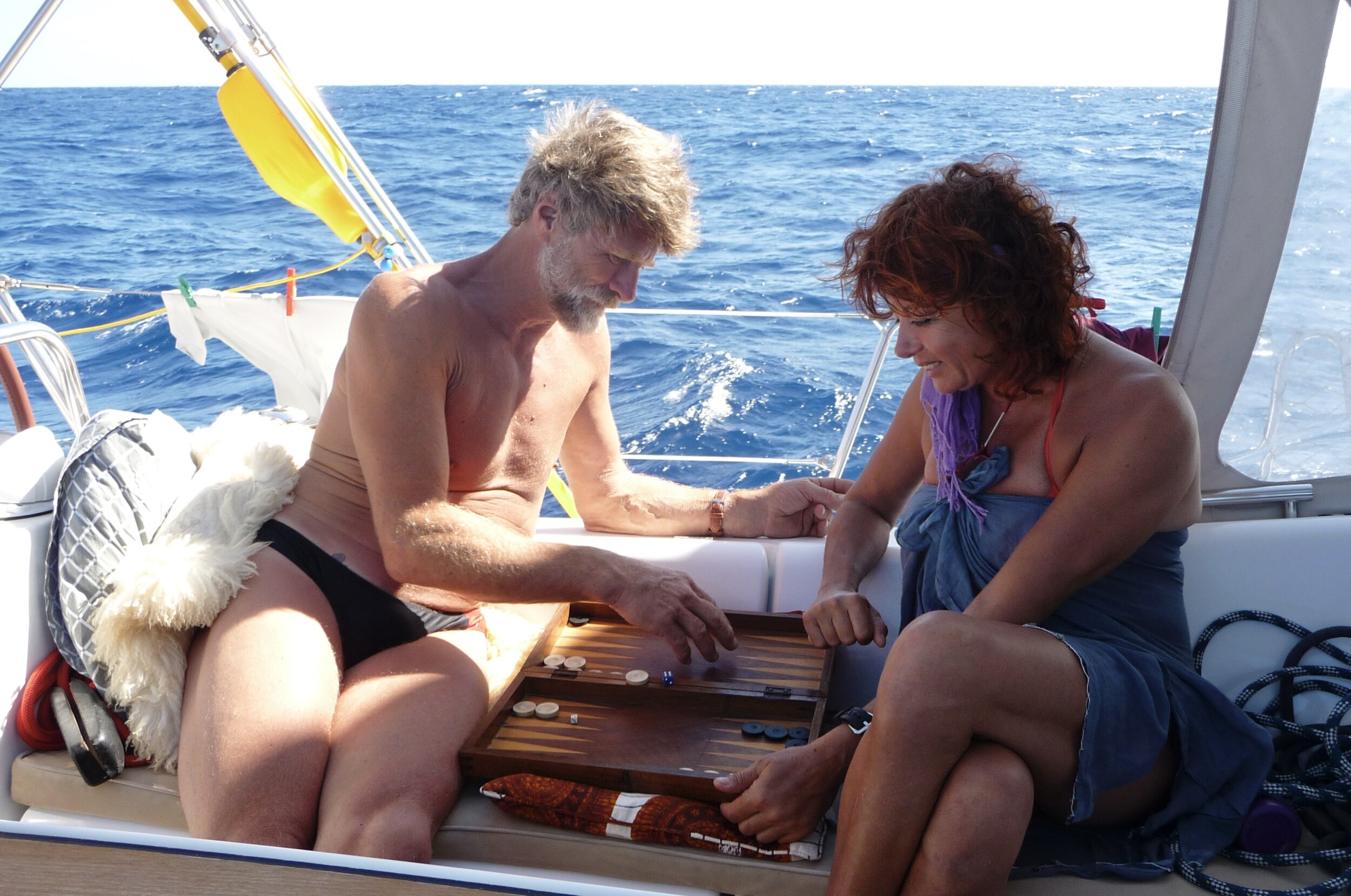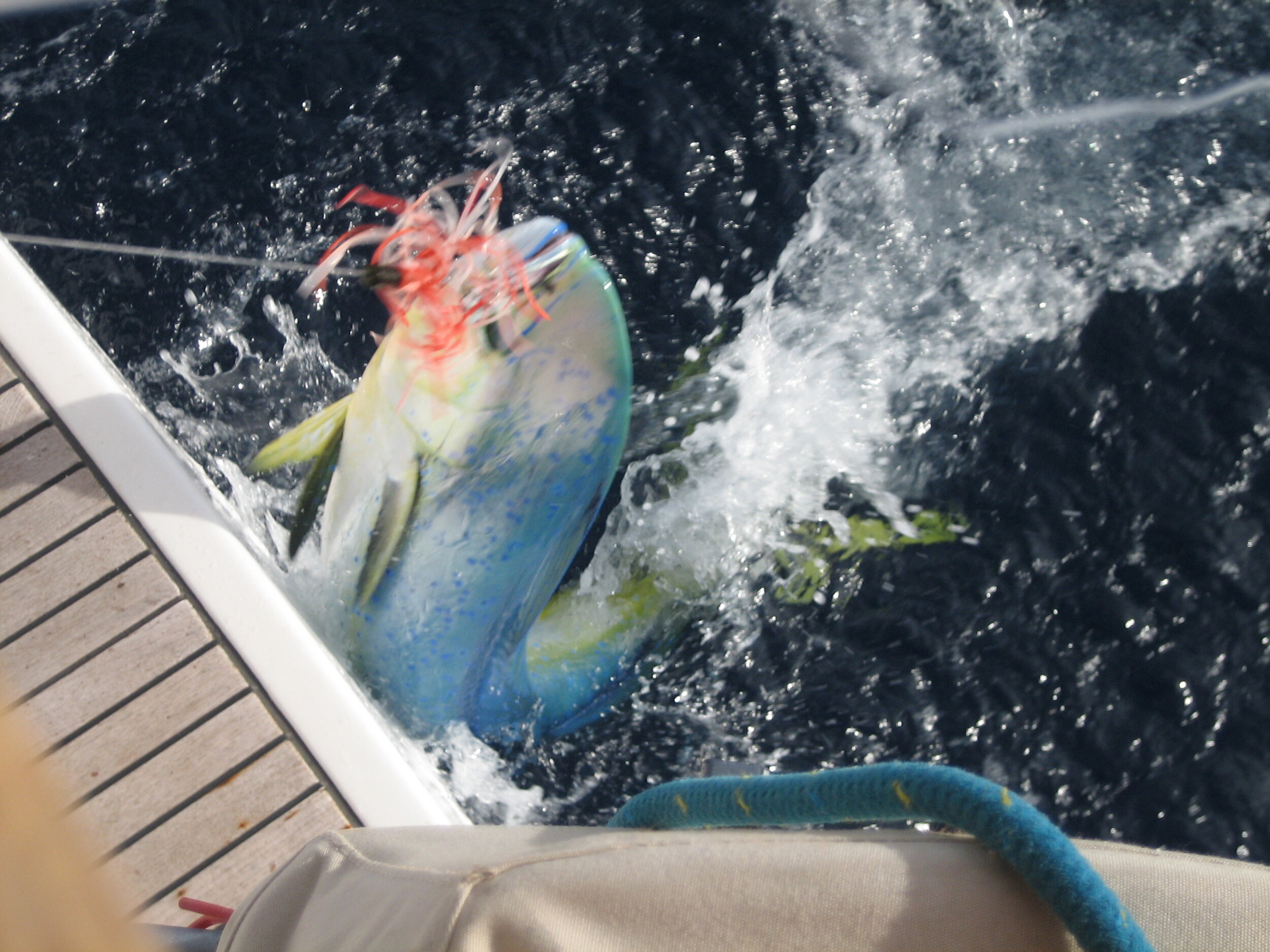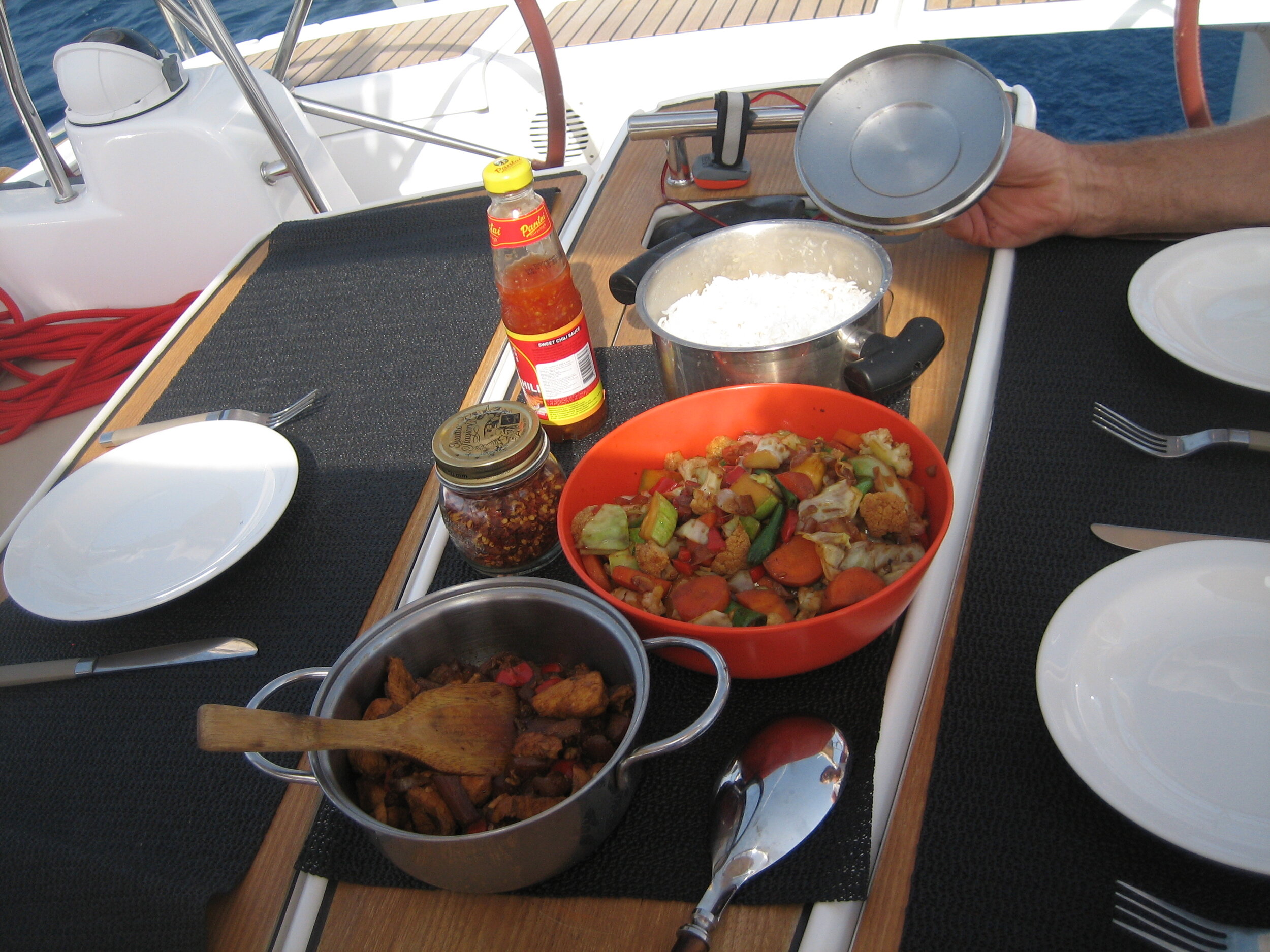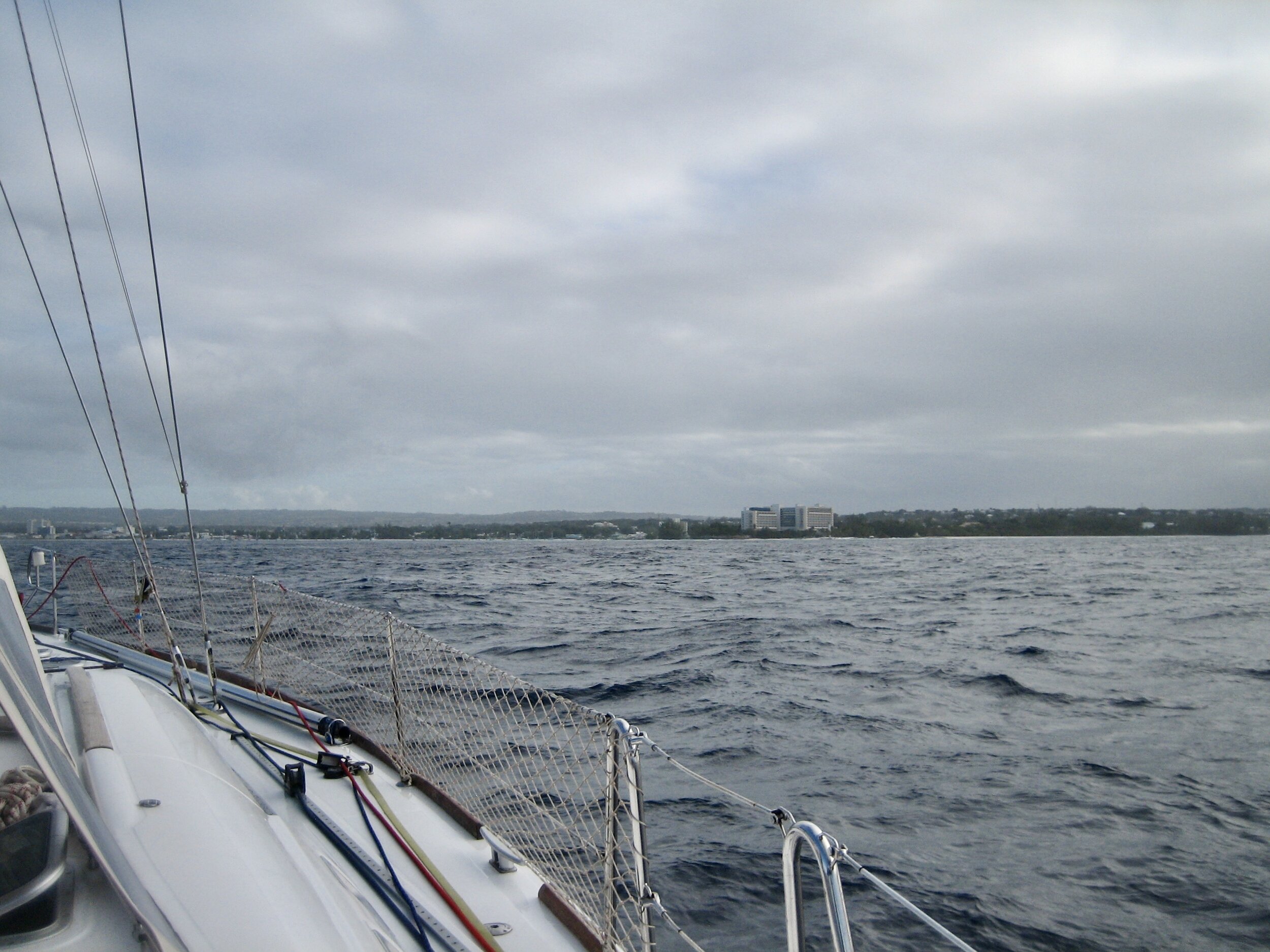Atlantic Passage East to West
2010
Adding chafe protection on lines.
Ben, Banu and Peter. Denize II’s 2010 Atlantic Passage crew.
Sailing into the sunset.
Time for backgammon…
The mahi-mahi that got its revenge!
Surgery on board! Peter stitching his own finger with Ben’s help.
Another beautiful sunset.
Peter placing a PVC pipe on the spreaders to reduce chafe on the sail.
A typical meal on Denize II’s Atlantic Passage.
Approaching Carlisle Bay, Barbados on Feb 2nd, 2010.
Final Preparations for the passage
Our third crew member, Ben White joined us in Rubikon Marina in Lanzarote, Canary Islands. We spent a few days on repairs and maintenance, sightseeing on the island, and shopping. We were ready to leave but this time the wind was too light for departure and we had to wait a few days before left. We finally set sail from Lanzarote towards Barbados on January 14, 2010.
A comfortable passage: Jan 14-Feb 2, 2010
We had perfect weather for an ideal passage across the Atlantic. The plan was to first sail south toward Cape Verde and head towards the Caribbean from there. A typical milk run!
Since there was a dengue fever outbreak in Cape Verde, we decided not to stop there unless we had to. Our destination was Barbados.
We used a 6 hours by day, 4 hours by night watch schedule.With three crew, this schedule meant that watch times were different from day to day. Naturally, in case of sail changes or other procedures requiring more than one crew, we were to call upon the crew members who were off watch.
We were sharing food preparation. Everyone was responsible for preparing their own breakfast. We had a shared meal before sunset which was cooked by the person on watch at that time. We also prepared our own snacks for nighttime sailing.
The only job we didn’t share was communication. Banu was responsible for communication through SailMail on the SSB radio connected to the Pactor Modem and computer. She also participated in the “cruisers net” every day, talking to other boats on the same route towards the Caribbean. Sending email messages to friends and family was also handled by Banu.
We got additional weather information support from two friends on land. One was John Stevenson, a retired navy meteorologist and the second was Tom Walton, a long time cruiser friend. We were sending location and route information and they were sending us their expectations for weather around us. We were then comparing these ideas with our own based on the GRIB files we downloaded through SailMail and did our route planning.
We had our small asymmetrical spinnaker up throughout the passage. For the first few days the wind was so light that our speed hardly averaged 5-6 knots. Cooking, fishing, and light boat jobs kept us busy through the days. Checking halyards and sails for chafe was a daily job that had to be performed.
Wind increased slightly to 15-20 knots after we neared Cape Verde. On the eighth day our spinnaker halyard broke at the mast head. Peter had to climb up and lead a new halyard through the mast so that we could continue using our spinnaker for the rest of the trip.
The most exciting portion of the day was dinner! Since we had moderate weather, we could get creative with the menu. Peter’s bacon wrapped dates, pizza, apple pie, and various Indian meals, Banu’s salmon pasta, vegetable stir fry and salads were the most memorable meals of the trip.
We were quite disappointed with the number of fish we caught. By day 8 we had only caught two large tuna. Then one morning we noticed the big mahi mahi on our fishing line. The fish was sparkling with beautiful blue, yellow and green colors when Peter pulled it to the boat. It was such a beautiful creature that Banu insisted we throw it back in. The poor fish turned an ugly grey under Peter’s knife and was taken down below for filleting. Peter was going to use the newly sharpened kitchen knife to fillet the fish. The boat rocked, the knife slipped, and Peter cut his middle finger to the bone!
Before our departure Banu had informed the crew that she could not purchase any sutures for the passage. Peter’s finger needed stitching and we only had sewing needles and thread for the job! With Ben’s help Peter cleaned and stitched his own finger. We put him to bed after giving him some oral antibiotics and hoped for the best. The finger was to heal perfectly by the time we arrived in Barbados.
On our final night of the passage we saw the glittering lights of Barbados in the horizon. The wind had picked up so by morning we took down our spinnaker, unfurled and poled out our genoa and sailed into Carlisle Bay by 11 am. Carlisle Bay is known to be a rolly anchorage, and it certainly was, during our stay. Otherwise it was a convenient place to do our entry paperwork and wait for Ben’s departure flight. We we finally in the Caribbean and now our job was to figure out which Islands we wanted to visit before heading north towards the east coast of USA.


